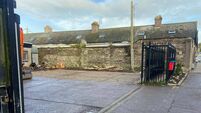Family tree: The life of the alder
THE Tree Council of Ireland has the gift of prophesy: it designated 2008, one of the rainiest ever recorded, as the Year of the Alder. For this tree, wetter is better. Alders love swampy places. The ‘amphibian’ of Irish trees is not well known, and so the Tree Council is giving it a PR boost. Most people can recognise an oak, or an ash, but few would know an alder, despite its wide distribution. This remarkable and useful tree deserves more respect.
The name is ancient. English, Irish, and 130 or so European and Indian languages are descended from a parent known as Indo-European, whose origins are obscure. However, some words in common use have come down to us intact from that ancient tongue. One such survivor is ‘el’, which denotes the red-brown colour of animals, such as ‘elk’, and the barks of trees, such as ‘elder’ and ‘elm’. The ‘al’ in alder may also derive from ‘el’. Although the alder’s bark is a darker brown and the chopped wood is white, the timber soon turns red or orange. The colour is so distinctive that, in Ireland, the alder is sometimes called ‘the mahogany tree’. Places such as Aldershot bear the name. The Irish, fearnóg, gave us Ferns, in Co Wexford, and, possibly, Rathfarnham, in Dublin.













